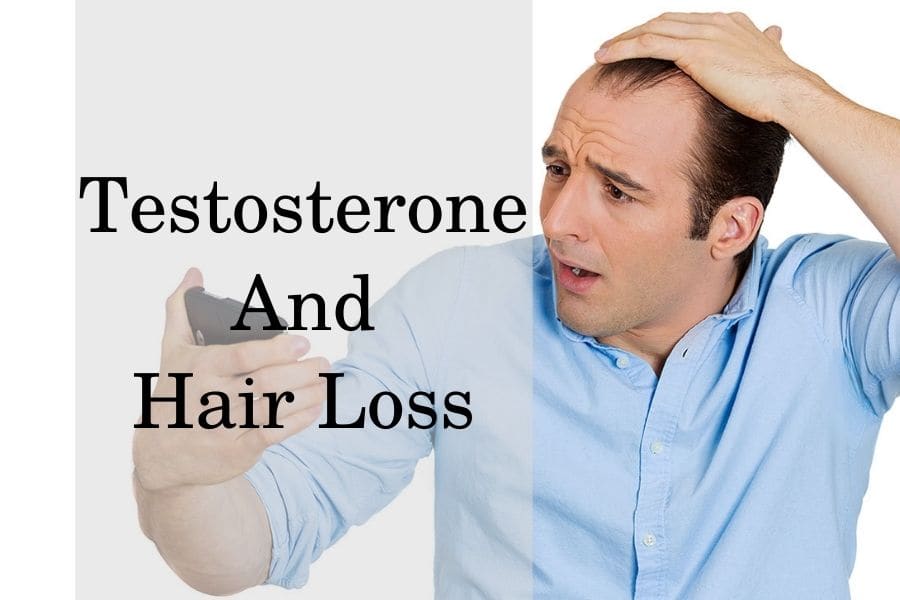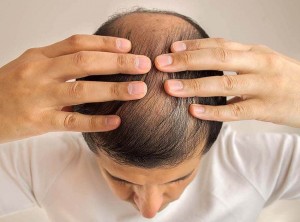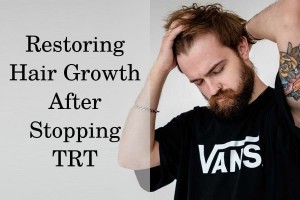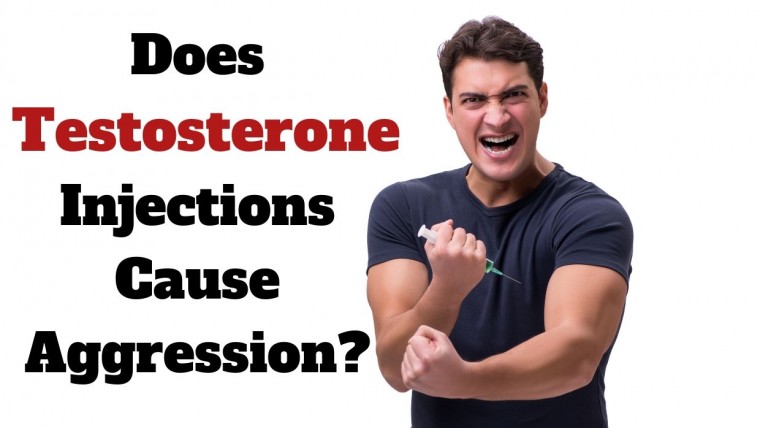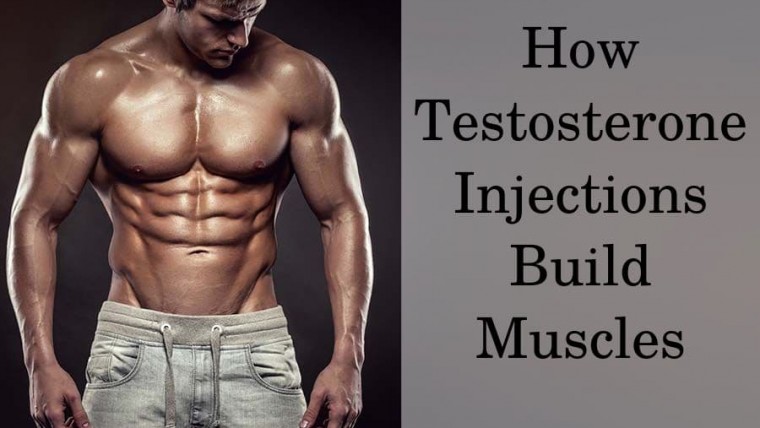In this article
About half of all men and a quarter of all women will experience androgenic alopecia at some point in their life.
This is the most common form of hair loss and as the name suggests, it’s linked to the levels of androgenic hormones such as testosterone (T).
That’s why there is a widespread opinion that high testosterone can cause hair loss. However, the relationship between T and alopecia is not so simple.
Multiple factors affect the risk of hair loss including genetics, enzyme levels, and receptors’ sensitivity. In fact, men with low or normal levels of serum testosterone might also experience hair loss.
Does taking testosterone cause hair loss?
Androgenic alopecia is also known as female and male-pattern hair loss. In men, it primarily affects the top and front of the scalp. There is a complex relationship between the condition and testosterone.
A 2017 meta-analysis reports that there are no statistically significant differences in T levels between patients with alopecia and healthy controls.
Recent studies report diverse findings including both higher and lower T levels in patients with early-onset hair loss. However, when compared to controls, there are no significant differences in all studies.
Thus, testosterone alone is not likely to cause baldness. However, trials report a strong association between hair loss and another androgen called dihydrotestosterone (DHT) which is linked to testosterone.
An enzyme called 5-α reductase converts testosterone into DHT. Its concentration is highest in the scalp and the prostate. Even if T levels are normal, a high activity of that enzyme can result in elevated DHT.
Furthermore, increasing T levels via testosterone replacement therapy (TRT) might cause baldness in patients with such predisposing factors.
If the dose of testosterone is supraphysiological, such as during steroid abuse, this can also elevate DHT levels above normal ranges and increase the risk of alopecia.
How does DHT cause hair loss?
The androgens are actually known as hair growth hormones because they have anabolic effects on human hair. However, hair follicles at certain body sites respond negatively to DHT – a phenomenon is known as the androgen paradox.
DHT stimulates facial and body hair growth, but also it activates several negative mediators in the human scalp, which cause the shrinking of the hair follicles. The hair gradually thins out leading to baldness.
The levels of DHT can increase if 5-α reductase activity and T are high. However, increased sensitivity of its receptors in the hair follicle can speed up hair loss and lead to alopecia even if DHT levels are normal.
Evidence suggests that the sensitivity of these androgen receptors is largely determined by genetics
How to reduce DHT levels
The obvious target for reducing DHT levels is blocking the 5-α reductase enzyme which converts testosterone.
One of the most popular 5-α reductase inhibitors used for treating alopecia is Finasteride. A trial in more than 3000 patients found it to be effective in 87% of the cases.
Different plant foods and herbs contain polyphenols and phytoestrogens, which are also known to inhibit the 5-α reductase to various degrees. Examples are green and black tea, black pepper, curcumin, saw palmetto, etc.
Studies report that unsaturated fatty acids and vitamin B2 might also reduce the activity of the enzyme.
How to avoid hair loss on TRT?
If you are genetically predisposed to androgenic alopecia, TRT might speed up the process.
Thus, it might be a good idea to also take a medication such as Finasteride which can block the conversion of T to DHT.
The effect of Finasteride on hair growth occurs within the first 3 months of treatment
Furthermore, vasodilators such as Minoxidil, increase the blood flow to the hair follicles when used on your scalp and thereby slow down hair loss.
Will the hair grow back after stopping testosterone?
Receding hair due to TRT may be reversed if you wean off testosterone injections properly. Your hair follicles can recover, as long as they haven’t accumulated too much DNA damaged and shrunken completely.
Medications and lifestyle changes such as quitting smoking, reducing stress, and consuming more plant foods rich in polyphenols might speed up the recovery process.
Unfortunately, once the process has advanced and you have completely lost your hair, medications are no longer effective in reversing it.
Can low T cause hair loss?
Androgens such as testosterone control hair growth all over the body. Low T can also lead to hair loss, although it lacks the typical pattern of androgenic alopecia.
In fact, there are cases where low T has led to complete baldness, body and facial hair loss.
Thus, receding hair all over your body, without a specific pattern might be a sign of testosterone deficiency. The condition is called hypogonadism and can lead to serious symptoms such as:
- Body fat gain
- Muscle loss
- Osteoporosis
- Heart disease
- Chronic fatigue
- Concentration problems
- Low libido and erectile dysfunction
How to treat low T
You can manage hypogonadism successfully with testosterone therapy, which you can get with a legal prescription. A prescription allows you to purchase TRT from licensed clinics, which ensures the safety and effectiveness of your therapy.
Currently, we lack evidence to suggest that TRT can reverse the generalized loss of hair caused by hypogonadism. One trial in women with low T, reports that testosterone therapy improved scalp hair growth.
However, if low T is left untreated it can lead to more debilitating signs and symptoms. Patients with untreated hypogonadism might have up to 40% increased mortality.
Main causes of hair loss in men and women
Genetics is the main cause of androgenic alopecia. Studies in twins reveal that the heritability is almost 80%. Scientists have not established yet all of the genes which predispose to baldness.
Advanced age is another major factor in hair loss. Even though T levels plummet in older adults, DNA damage accumulates in the follicles and leads to their death.
By the age of 80, 80% of men and 50% of women experience androgenic alopecia
Furthermore, 5-α reductase and androgen receptor activity remain elevated in older people despite the age-related drop in testosterone. Androgen receptor is one of the factors that accelerates the process of follicle senescence and speeds up balding.
Emotional stress might also speed up androgenic alopecia. Genetically susceptible individuals might experience hair loss at a faster rate when under a lot of environmental stress.


